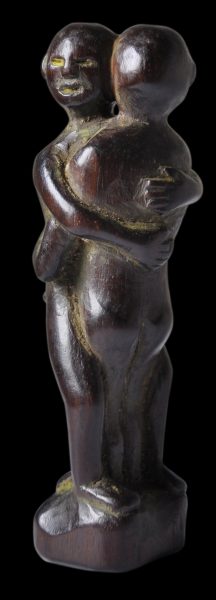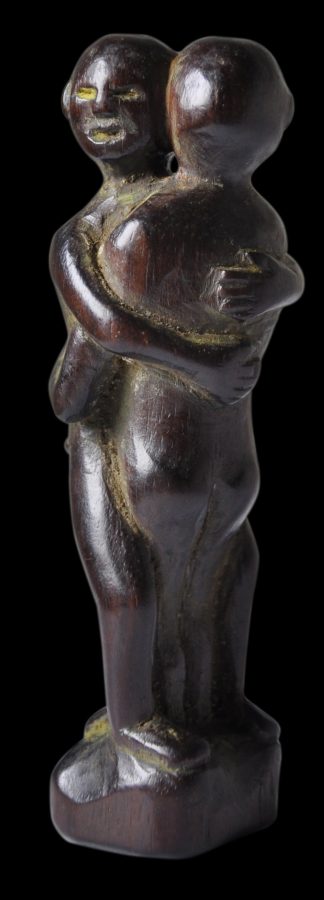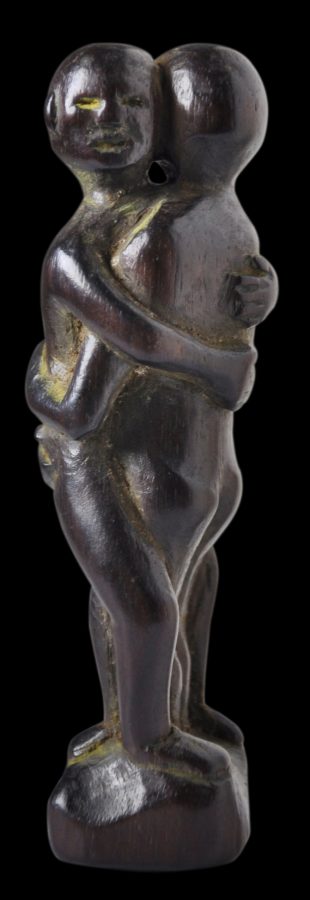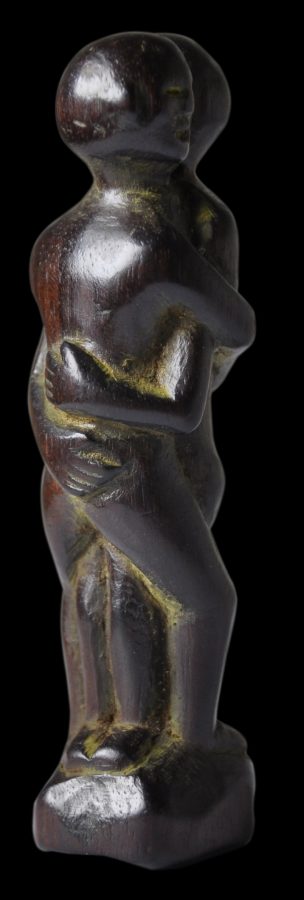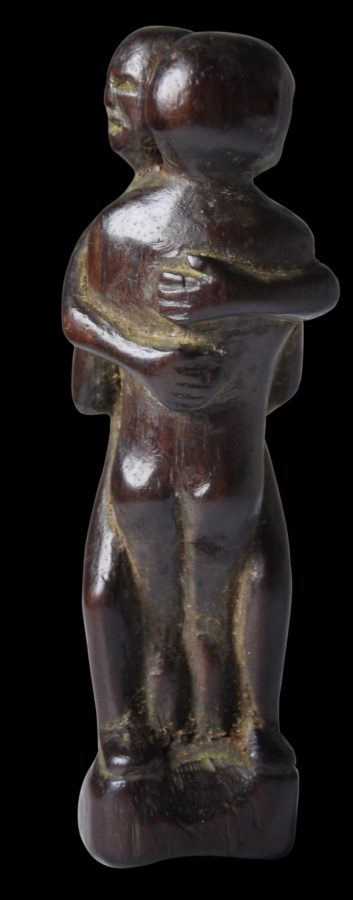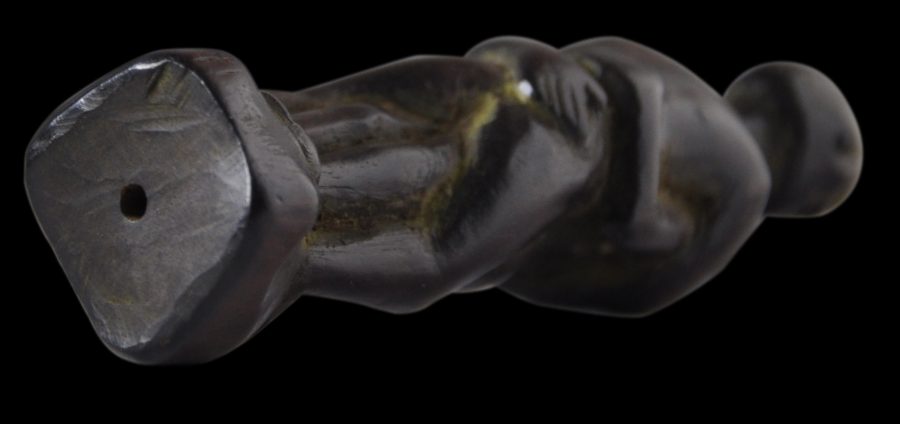This beautiful charm or pendant has been carved from a single piece of wood. It shows a couple embracing tightly. The sculptural quality is matched by a superb, lustrous, dark patina. The contours have been worn smooth by years of handling. The charm has a small hole drilled between the necks of the couple through which some twine was threaded to allow the piece to be worn.
Most probably, the charm began life as a handle on a wooden spoon or ladle. Such figurative spoons were used by the Ifugao and Bontoc peoples of northern Luzon in the Philippines for ritual purposes. The spoons were handled on a daily basis and were kept in an open basket above the hearth in the family home. Such handling and storage accounts for the deep patina that the better examples of such spoons have developed.
The spoons were regarded as heirloom items and imbued with talismanic properties. Accordingly, warriors, when attacking and raiding rival villages, would take the spoons among other ‘war’ booty, and would cut off the figurative handles from the spoons and attach them to armbands known as tangka or tangkil or wear them as charms.
The example here is in excellent condition, with the most astonishing patina. It is wearable as a pendant, or makes an excellent collector’s item.
References
Afable, P., et al, Philippines: an Archipelago of Exchange, ACTES SUD/ Musee du Quai Branly, 2013.
Gomez-Garcia, P., ‘Northern Philippine primitive wooden art’, Arts of Asia, July-August 1983.


